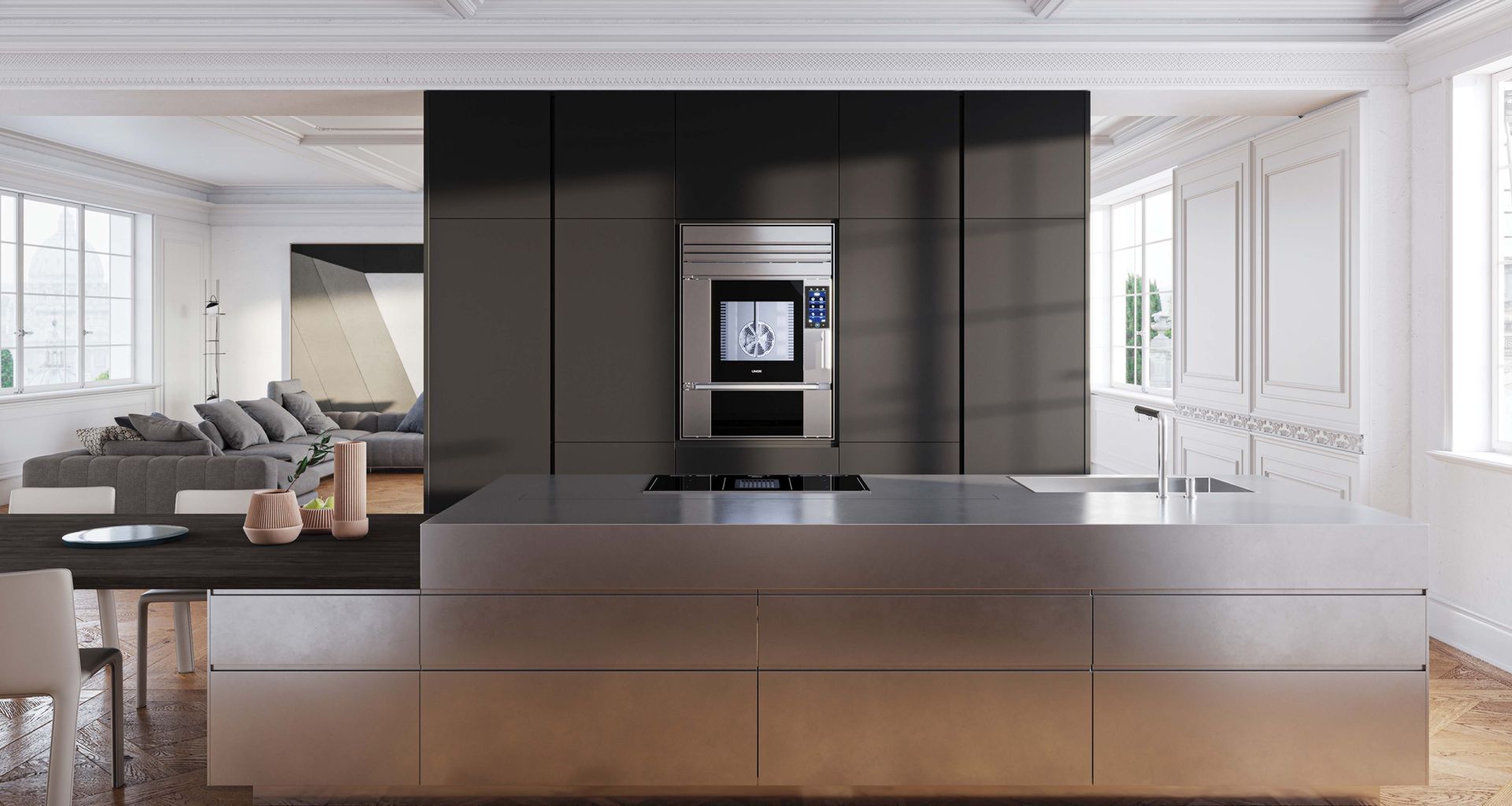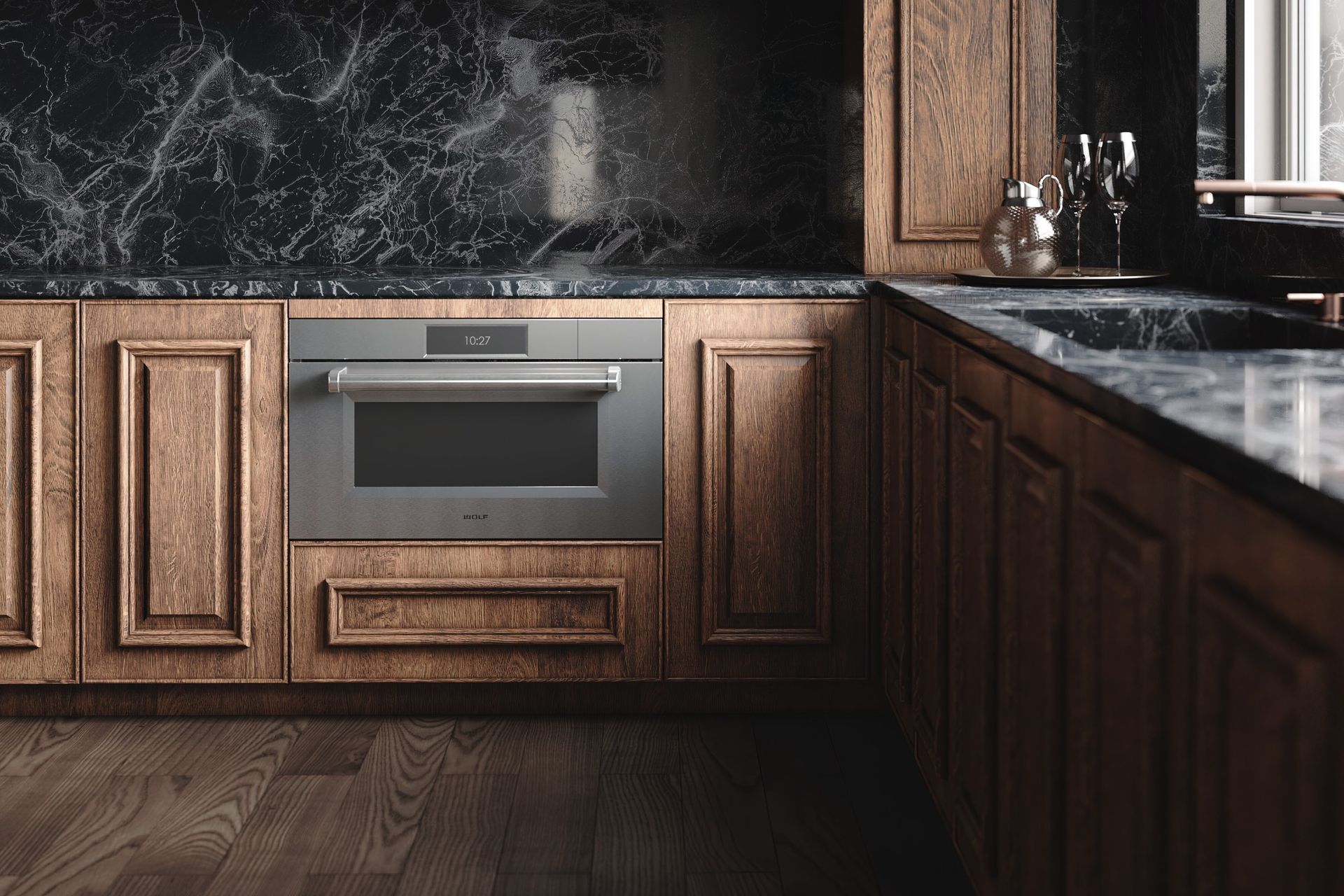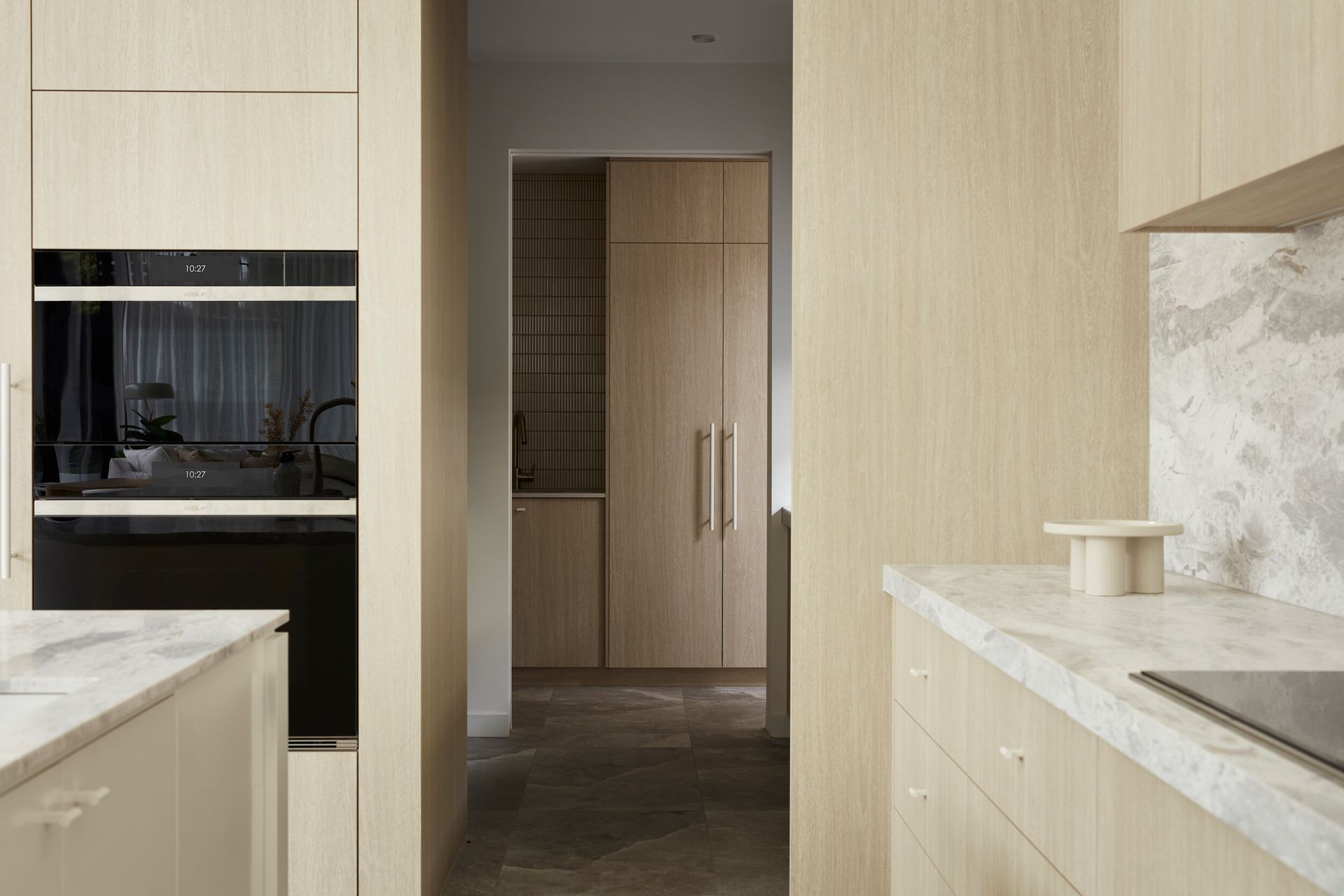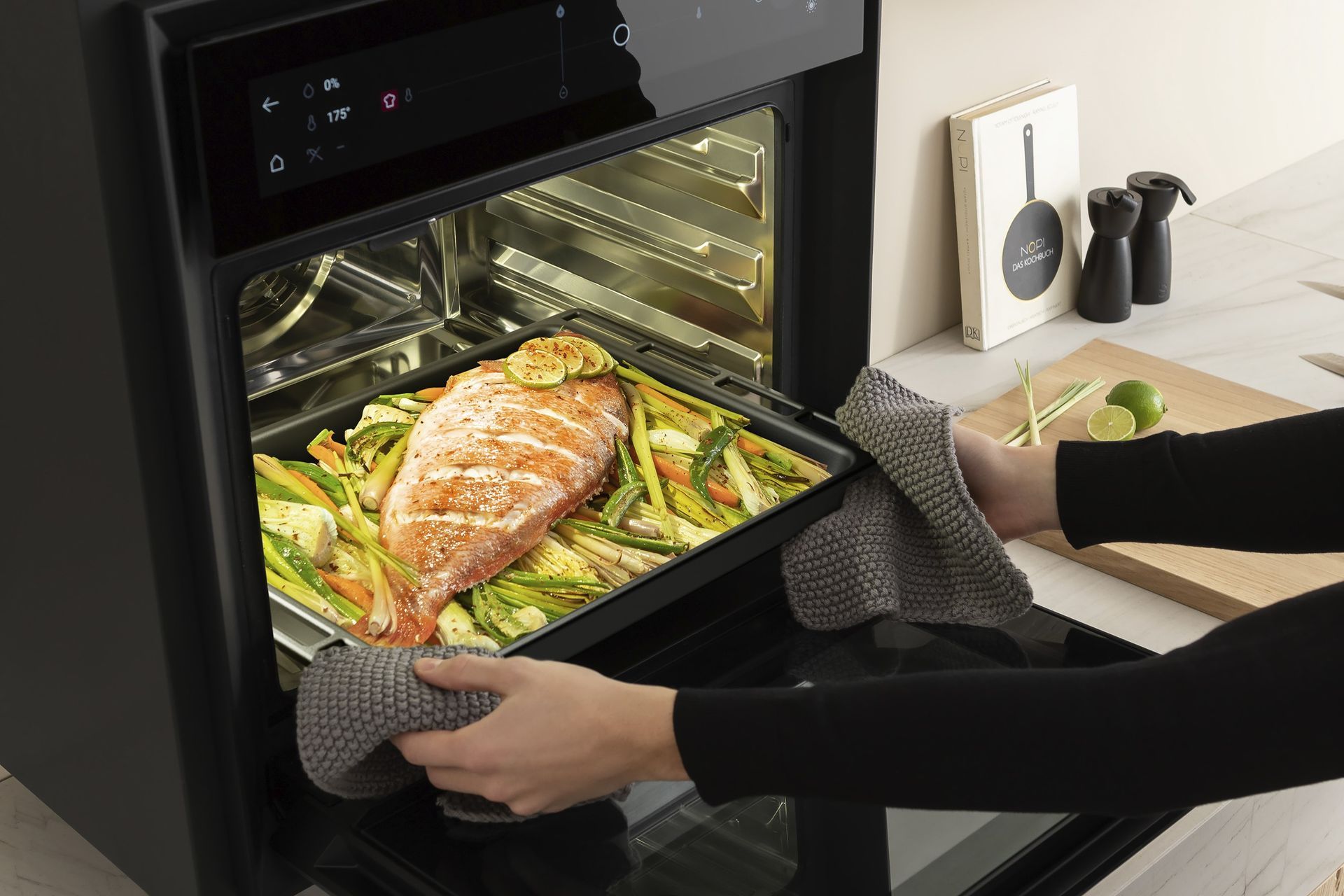Exploring steam ovens: An in-depth overview covering everything you need to know

Steam cooking is a culinary technique that dates back to ancient China, where Zeng pots first appeared in the Hemudu culture (5000–4500 BC). This traditional technique has surged in popularity due to its health benefits and ability to preserve the natural taste of food. As more people become health-conscious and prioritise nutritious foods in their daily meals, many are turning to steam ovens for meal preparation. In this article, we'll take a comprehensive look at steam ovens, exploring their features and benefits, pros and cons, and more.
What exactly is a steam oven?
As you can guess by the name, a steam oven uses steam to cook food, which helps maintain moisture, preserve nutrients, and enhance the meal's texture and flavour. Water is stored in a built-in reservoir or connected directly to a water supply that the oven uses to create and distribute steam throughout the cabin, enveloping the food and cooking it evenly at a controlled temperature. This cooking method maintains moisture in the food, preventing it from drying out and preserving its nutrients, texture, and flavour. Some steam ovens also combine steam with traditional convection heat, allowing for versatile cooking options that offer both crispy and moist results. Ultimately, using steam in the cooking process promotes healthier meals and enhances the culinary experience by retaining the food's natural qualities.

Pros and cons of steam ovens
Steam ovens offer an array of unique benefits that you won't see in other cooking methods. Because of these unique benefits and features, steam cooking has become a popular, modern trend despite its ancient background.
Pros of steam ovens
Nutrient preservation
Steam cooking preserves vitamins and minerals by minimising water contact, using lower temperatures, and reducing cooking times compared to boiling or frying. This method maintains key nutrients like:
- Vitamins: C, B, A
- Minerals: Potassium, magnesium, calcium, iron, zinc
- Phytonutrients: Glucosinolates, flavonoids, carotenoids
- Proteins and amino acids
It prevents the loss of water-soluble vitamins (B and C) and heat-sensitive nutrients, retains natural moisture, and eliminates the need for added fats or oils, enhancing the food's nutritional value.
Less cooking fats and oils
As just mentioned, steam cooking requires fewer fats and oils, leading to healthier meals. When steam is used to prepare food, it retains natural moisture and flavour, reducing the need to add oils and fats to enhance taste and prevent sticking. This results in fewer calories, which is beneficial for heart health and weight management.
Reduced cooking odours
Steam ovens reduce cooking odours by using moist heat to trap volatile compounds, preventing their dispersion into the kitchen air. Operating at lower temperatures with less browning and caramelisation also reduces strong smells. Additionally, many steam ovens feature self-cleaning functions and better seals, further containing odours.
Ease of cleaning
Steam ovens are easier to clean due to their self-cleaning functions, which use high-temperature steam to loosen food residues and grease. The moist heat prevents food from baking on surfaces, and the smooth, non-stick interiors simplify wiping away messes. Steam also acts as a natural degreaser, breaking down oils without harsh chemicals, while better seals contain spills within the oven cavity.
Cons of steam ovens
Limited browning and crisping
Steam cooking does not brown or crisp food as effectively as traditional dry heat methods. This can be a drawback for recipes that benefit from a crispy exterior, such as roasted meats or baked goods. The lack of browning can impact the texture and appearance of dishes that typically rely on a crunchy or caramelised outer layer to enhance flavour and presentation.
Complex installation
Installing a steam oven is complex due to the need for a dedicated water supply, plumbing modifications, specific electrical requirements, and professional installation. Size and space considerations may require custom cabinetry, and proper ventilation is essential to prevent moisture build-up. These factors make steam oven installation more involved than conventional ovens.
Learning curve
Using a steam oven requires learning to adjust cooking times and temperatures for moist heat. You’ll have to master steam settings to maintain moisture in meats and vegetables and adapt recipes due to the lack of browning and crisping. Regular maintenance, like descaling, adds to the learning process, making steam ovens more complex to use than traditional ovens.
Related article: Must have kitchen appliances for new homes in Australia

Applications in cooking
Steam ovens offer multiple culinary applications that enhance the quality and versatility of your cooking. Several of these key uses include:
Vegetables and meats: Steam ovens are well known for gently steaming vegetables and meats, preserving their nutrients and natural flavours.
Baking bread: They excel at baking bread, using moisture to create the perfect crust—a crispy exterior with a soft, moist interior.
Reheating leftovers: Steam ovens are excellent for reheating leftovers, as the moisture prevents food from drying out, revitalising its freshness.
Desserts and pastries: Ideal for making desserts and pastries due to consistent and gentle heating.
Types and styles
Steam ovens come in multiple types and styles, each offering its own attributes and benefits to suit your cooking needs and kitchen design. Some of the main ovens include:
Pure steam ovens
Pure steam ovens solely use steam and are perfect for preparing vegetables, fish, and other delicate foods. This type of oven is ideal for health-conscious cooks looking to retain nutrients and natural flavours.
Advantages and disadvantages: This oven is simple to use and an easy choice if health is the number one priority in your diet. Its main focus is to retain nutrients and natural flavours without needing additional fats or oils. While a pure oven is great for a health-conscious diet, it is limited in terms of functionality. Since steaming is the only means of cooking, you'll miss out on baking, roasting, and broiling.
Pro tip: When you buy a pure steam oven, ensure that it suits your cooking needs and features easy-to-clean components for easy maintenance.
Combination steam ovens (combi-steam)
Combi-steam ovens fuse traditional-style heating with stream functionality, adding versatility to your culinary arsenal. Utilising steam and convection-style cooking, you can steam, bake, roast, and broil as needed for the dish you create.
Advantages and disadvantages: Combination steam ovens offer multifunctionality, allowing you to combine different cooking methods to get the benefits of both steam and broil cooking, for example. Due to additional features, combi-steam ovens will typically cost more than pure steam or traditional ovens. You can expect to pay 20-50 per cent more for combi-steam oven.
Pro tip: When looking for a combi-steam oven, look for a model with user-friendly controls and preset cooking programs. These features can simplify cooking and maximise the versatility of the appliance.
Built-in steam ovens
Built-in steam ovens are integrated into your kitchen cabinetry, which adds a seamless and stylish look to your kitchen. These types of ovens come in a myriad of sizes and styles to enhance the aesthetic of your kitchen and can be installed at eye level for your convenience.
Advantages and disadvantages: Built-in steam ovens are great for your kitchen's aesthetic and functionality. They not only seamlessly blend into your kitchen but also save you heaps of space. While this type of oven looks good and enhances the aesthetic of your kitchen, its installation can be complex and require professional help.
Pro tip: Before buying a built-in steam oven, measure your kitchen space carefully to ensure proper ventilation and electrical requirements are met and that an easy and safe installation process is followed.
Countertop steam ovens
Countertop steam ovens are compact and easy to transport, making them an excellent option for a smaller kitchen or if you want to move the appliance around at your convenience. These types of ovens are typically more affordable than the other types and are ideal for those who prioritise budget.
Advantage and disadvantages: Countertop steam ovens are quite portable and a good choice for kitchens with limited counter space. While these types of ovens are easy to transport and good for saving space, they are limited in cooking capacity compared to built-in models.
Pro tip: When buying a countertop steam oven, opt for a model with a compact design that still offers sufficient cooking capacity and versatile functions to maximise your kitchen space and meet your cooking needs.
Steam-assisted ovens
Steam-assisted ovens are basically traditional ovens but have steam functionality that allows for adding bursts of steam during the cooking process. This feature is great for baking bread and roasting meat to make crisp outer crust.
Advantages and disadvantages: Steam-assisted ovens combine traditional oven functionality by adding steam bursts. This is ideal for baking bread and roasting meats, resulting in a crispy crust. Although it adds steam function to the appliance, it does not offer the full capability of a steam oven.
Pro tip: When buying a steam-assisted oven, choose a model with customisable steam settings to give you more control over moisture levels for perfect baking and roasting results.

Financial considerations
Obviously, when you are looking at adding a steam oven to your kitchen arsenal, budget and cost are vital factors that determine which steam oven you can get. Pure steam ovens can start as low as $500, while combination steam ovens can easily reach over $5,000, but this all depends on brand, features, size, style and so on:
Factors affecting prices
Brand and reputation: Premium brands with a strong reputation for quality and reliability, like Miele, Bosch, and Westinghouse, typically command higher prices.
Features and technology: Advanced features like smart connectivity, customisable steam settings, and multi-function capabilities can increase the cost.
Size and capacity: Larger ovens with a capacity of 60 litres or more typically have a higher price tag than smaller, more compact models.
Energy efficiency: Ovens with higher energy efficiency ratings might have a higher upfront cost, but they can save money in the long run through reduced energy consumption.
Materials and build quality: Ovens crafted from high-quality materials such as stainless steel, cast iron, and ceramic as well as superior build quality, typically command higher prices due to their enhanced durability and performance.
Installation costs: Built-in models may have additional installation costs, impacting the overall price.
Running costs of a steam oven
Steam ovens are typically more energy efficient than traditional ovens due to their faster cooking process while using lower temperatures. The average consumption of a steam oven is between 1.5 and 2.5 kWh of electricity per hour. However, it's important to keep in mind that this is an average, and the actual consumption will depend on size, model, and usage patterns. Be sure to check the energy rating of the oven that you are looking at to get a better idea of its running costs.
How to choose the best steam oven
Selecting the right steam oven can be daunting with so many factors to consider, but this outline lists everything you should consider to make the process easier.
Determine the type: Based on your preferred cooking methods and versatility, decide between pure steam, combination steam, or steam-assisted ovens.
Evaluate size and capacity: Ensure the oven fits your available kitchen space and can handle your typical meal sizes.
Check features: Look for user-friendly controls, preset cooking programs, and advanced options like smart connectivity.
Assess energy efficiency: Check the energy efficiency rating to manage running costs effectively.
Research brands and reviews: Investigate reputable brands and read customer reviews to gauge reliability and performance.
Consider budget: Factor in your budget, including potential installation costs for built-in models.
Compare specifications: Compare different models' specifications to find the best value for your needs.
Steam to your heart's content
Having a steam oven as a part of your kitchen has become a modern trend, and for good reason. This kitchen appliance not only makes for a healthy method of cooking, but it also revitalises leftovers and prepares flavourful meals at a lower cost than traditional wall ovens. Designs are sleek and add to the aesthetic of your kitchen with ease. Now that you have read our in-depth article on what a steam oven is, you can make a well-informed purchase and find the perfect steam oven that adds to the appeal and functionality of your kitchen.
Related article: Plan your dream kitchen: a guide to renovation costs
